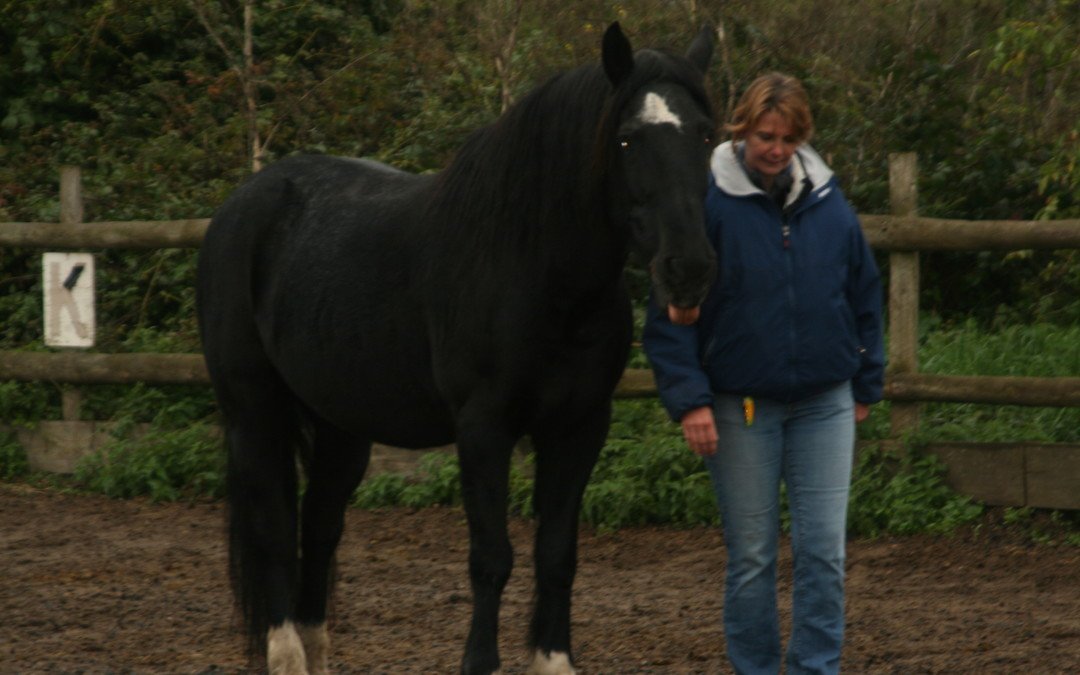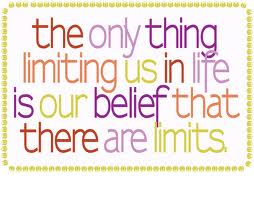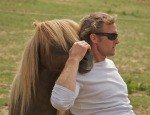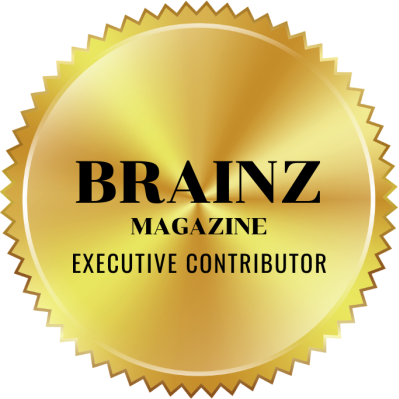
by Julia Felton | Oct 14, 2015
Almost a century after horses were the almost only source of transportation on our streets it is surprising that in this digital age, we still measure the power of a car engine in ‘horsepower’. Even today, when probably the only time most people will see a horse in on a Saturday afternoon at the races, horses still hold a fascination for everyone. For author and business consultant, Julia Felton she believes we can learn so much from them that every business should have one on its payroll.
Julia is the Herd Leader of Business Horsepower Ltd, a company that grew out of her realisation that the horses she keeps on her land in Yorkshire had become her best coaches in teaching her business and life lessons.
According to Julia ” I realised that my herd of horses live in a state of harmony. They act as a single unit and there is collaboration and shared leadership. A wild horse simply cannot afford to live alone, it is simply too dangerous and so the herd band together with a shared purpose of survival. To act in silo groups would be detrimental to the overall success of the herd, and yet, in the corporate world, that is what I witness in business day in day out.”
Drawing from this, and her extensive corporate experience growing effective teams at Andersen and Deloitte, she has just published a new book ‘The Alchemy of Change in which she reinvents ancient wisdom, and the forces of nature, to unlock the potential of leaders and teams.
in the same way that nothing happens in nature on its own, she has created the concept of the Joined-up business. Using an impressive array of tools, strategies and processes Julia helps the reader to unleash their powerful potential and “grab the reins” of their business and inspired everyone in it to work together with a singular purpose.
By each individual focusing on their unique natural strengths individuals, teams and organisations are able to become more engaged and motivated. Collaboration reigns and competition is banished. The result is increased productivity and profitability as twice as much is achieved with significantly less effort.
Her innovative coaching and development programmes, for individuals, teams and organisations, are inspired by nature and her herd of horses. She is committed to creating positive transformation and getting outstanding results through streamlining and systemising businesses so that all the aspects of the business are aligned and no resources are wasted.
During her 12 year career at Andersen and Deloitte she was responsible for developing a business from an idea on a piece of paper to creating and then building a million pound business unit, that became firmly established as the global market leader, providing business intelligence solutions to the hospitality industry. Her unique ability to work at both a strategic and tactical level means that she is sought after as a high performance consultant, mentor and coach.
Julia holds a degree in Hospitality Management and is a member of the Chartered Institute of Marketing and the Institute of Leadership. She is also a Fellow of the British Association of Hospitality Accountants. As a Master Coach and qualified NLP practitioner and trainer she enjoys mentoring young entrepreneurs and recently became a Young Enterprise Coach. She is also a Talent Dynamics Performance Consultant, a Trusted Sales Dynamics Coach and a Certified Money and Marketing Business Coach.
Julia’s passion is horses and as a natural horsemanship coach and a Licensed HorseDream Partner she often incorporates sessions working with the horses into her Business HorsePower leadership and team working programmes and Unbridled Success Retreats.
Julia is an accomplished international speaker and in addition to The Alchemy of Change: Ancient Wisdom Re-invented To Unleash The Potential of Leaders and Teams she is the author of Unbridled Success – How the Secret Lives of Horses Can Impact Your Leadership, Teamwork and Communication Skills. Her keynote speech Straight From The Horses Mouth: Leadership Lessons From The Barn To The Boardroom is provocative and thought-provoking, making her a sought after speaker.
Julia will be holding a book launch and masterclass event tonight – Wednesday 14th October – from 7-9pm at Waterstone’s Leeds.
For press, media and general enquiries please connect with Julia via connect@businesshorsepower.com. We can’t wait to hear from you.

by Julia Felton | Apr 22, 2014
Managers (… and others..) can learn a lot during horse – assisted training. Approaching horses, watching their reactions to our behavior, touching them, smelling them, leading them with or without a rope – this is a very special experience which brings people “down to earth”. Contrary to schooling in classroom where participants are mostly rational decision makers the context of horse – assisted education opens the emotional side of people. The authentic feedback of horses provokes reactions and insights for the participants which touches them deeply. That’s why horse assisted education is a very valuable completion of classroom seminars. In role plays in the classroom people often play a role – they are not authentic and are not open to really face their personal problems and challenges.
The following case study will highlight what I mean by integral leadership training: I will tell you the story of Lukas, a participant of a two day seminar: “Successful conflict resolution”, followed by a workshop with horse – assisted education.
My boss does not pay much attention to me… how can I attract more attention and recognition ?
Confession in the classroom
Lukas was one of nine participants with banking and insurance background who attended the seminar: “Successful conflict resolution”. At first sight he appeared to be a nice guy, polite, very intelligent (classical scholar with double PhD), very interested to communicate with the other participants, very engaged during the exercises and role plays. Overall, he left a rather shy impression, which showed also in his stooping posture.
At the end of the first day, Lukas had gained enough confidence to tell us about his actual problem at his workplace. He was assistant of the management board of a bank and his task was delivering profound analyses and background information – he told us how he was fascinated by his task – he was sure he could deliver competent information based on his long experience in the field. Unfortunately, he was seldom praised – even worse, his boss, an ambitious young woman, only used his work to create an image for herself. He admitted that he was now no more motivated.
First encounter with the horses – his favorite horse being Santana
It is always very interesting to watch the participants whom you know from two days classroom seminar in a totally different environment during their first encounter with the horses. Most of them are really looking forward to the new experience. Others are sort of nervous to meet the horses and ask themselves if they will be able to lead such a big animal. A few are in fear of horses and tell me in advance that the observer role will be alright for them ( in most of the cases they change their mind and will ask me “What do you think, if I try myself ?”…).
Lukas was very eager from the very beginning – he told me that he didn`t have any specific experience with horses but that he was always fascinated by these proud and elegant species.
During the first exercise participants are watching a group of horses which play around in a riding arena. This exercise is useful to get a first impression of the horses. The task is to watch the behavior of the horses very carefully – are there any differences in character? – which horse attracts me most? During this exercise every participant can choose his favorite horse for the following exercises. Lukas` choice was Santana, a very elegant mare with beautiful expressive movements. I asked him why he chose Santana? “That is very clear, I am fascinated by her elegance and assertiveness – did you see how Santana reacted when this brown little pony wanted to bite her? … she just kicked out at him. I also chose Santana because of her gentle expression on her face..”
Lukas and Santana – not a dream team yet
The exercise is to lead the horse on a rope, individually. The participant has to walk through different obstacles with the horse: turn around poles, pass through small obstacles, walk over tarpaulins on the floor. Lukas was very eager to do his job with Santana – his eyes sparkled like a little child when he took the leading rope of Santana. Only seconds later the expression of his face changed dramatically: Santana was not willing to follow him. He tried to motivate her by gently moving the leading rope.. no chance – he did not know what to do. He tried some other timid movements, without success. He tried to talk to her – no chance – discouraged he watched the group.
I asked him: ..” Do you think the horse knows, what you want from her?” Lukas seemed to understand.. “ok, I will show her what I want.. I will take a leading position, walking in front of her”…with timid movements he made some steps forward – seemingly not convincing enough. Meanwhile, Santana took a very uninterested stance and did not move. Poor Lukas was in a quite desperate state … I asked him: .. “Do you think the horse can recognise your full presence and determination?” Lukas seemed to think about this and suddenly changed his posture, he appeared much more focused now and -.. no surprise.. Santana started moving and followed Lukas… up to the second obstacle where Santana stopped again. This time it was Lukas who gave the explanation himself: “I can tell you why she stopped.. I was very uncertain if she would pass through the second obstacle … how can I take a leading position when I am uncertain and even in fear?” Now Lukas made his way with Santana very determined and we could watch how he enjoyed realizing how easily the mare followed him – finally Santana had accepted him as her leader.
Lukas` statements after his exercise
Deeply touched and still very excited, Lukas told us how he lived these 10 minutes: “In the beginning I was quite in despair– I approached Santana so gently but I could not gain her confidence – I had no authority. Only after I was totally despaired about the failed trials I had the energy to get through and to be finally respected. I am sure Santana could feel that I was clearly focused on reaching my target. I am very happy now that I succeeded to move her, finally – may be that is also true for my life: I have to stand up and signal very clearly to others what I want!”
What we learn from this story
Already in the classroom Lukas had told us from situations at his workplace where he was not much respected despite his broad experience and competence. The exercise with the horse showed him a way how he could increase his assertiveness.
Typically, Lukas chose the mare with a lot of expression, who showed that she is able to defend herself … characteristics Lukas would like to have himself, as well. During the exercises Lukas could learn about the importance of determined body language and clear target oriented action – there was a clear difference of his presence – before and after.
I am always impressed, how the lessons taught by horses are so easily accepted by people – may be people think, “Well, its only a horse which reacts.”
That is a real advantage of horse- assisted education – horses can mirror people the unvarnished truth and it is accepted quite easily. For me as a coach or another participant it often needs a lot of diplomacy and fine feeling to bring the message to the point.
Working with horses we are not only focused on rational thinking but we are also touching the emotional side of our participants. As newest research about limbic learning shows us the emotional involvement is a prerequisite for inner acceptance and finally for change of habits or behaviour.
Conclusion
Horse – assisted training is a most valuable completion of classroom seminars. To be efficient and sustainable the process of coaching and training is most important – horse assisted training must be embedded in a clear context: starting with a clear statement about the status quo and the personal targets of the participant. Previous classroom seminars often bring up important issues and targets for horse – assisted education. Another possibility is a well coached brainstorming with the group prior to the horse seminar. Most important is the reflection during the horse – assisted training session : by the participant himself, by the group and the coach. Videos are a useful tool to reinforce the reflection – nobody would be able to explain your non-verbal communication and appearance better then when you watch yourself on the video… ! Insight is one thing… change of habits another! So it is most important that the insight process is followed by a clear transfer plan – a plan which must be developed by the participant himself – because only he is able to know how far he is ready to initialize change– the coach is only the motivator of this process.
In the transfer process we have another valuable effect of horse – assisted education: the situations lived with horses leave a deep impression on the participants – the success stories with the horses serve as a clear anchor – the inner pictures of successfully leading Santana, Prince or whatever the name of the horse is, will encourage the participants to be more self – assured and determined.
By Dr. Barbara Gorsler, Management Trainer, Dietlikon, Switzerland

by Julia Felton | Apr 1, 2014
With the Spring Equinox just passed it seems appropriate that the last two weeks have seen lots of transformations happening at Business HorsePower – both for me personally and also for my clients and horses. As the weather warms up the horses are beginning to shed their winter coats and lose the woolly mammoth look they have had over the winter and soon will emerge as sleek, refined animals. As I’ve been watching the process I observed how for my young pony Bracken in particular losing her coat is tough. It makes her really itchy and so she spends all day scratching herself and rubbing herself on the fence posts.
I’ve also been noticing a similar trend with my clients – no they haven’t been scratching on the fence posts! – but as they have been losing and shifting their beliefs particularly about money and it hasn’t always been comfortable for them. You see our limiting beliefs are just like a nice, woolly coat. They keep us safe and warm. We think that they protect us and for some time they serve that purpose. But eventually, if we are to grow and develop, we need to shed them and find a new coat to wear. One that serves us for the current season we are living in, and not the old season that has gone by.
You see many of our beliefs are established when we are children and are often adopted from our parents and our primary care givers. Whilst these beliefs might have served us as a child many of them are not serving you now. So what are your beliefs? Are they those of an adult or a young child? Do you have a 12 year child running say your relationship with money, or is it an adult? If your inner child is still running your relationship with money, you might want to lose that woolly coat and find a new one that better serves who you are right now.
This is exactly the experience that one of the private clients had last weekend. Whilst we were working on his business and creating new marketing systems and strategies it became clear that his relationship with money was still being run by a 12 year old child. It was fascinating and rewarding to see the transformation my client made as they shifted these old beliefs and transformed their relationship with themself and money. They are now empowered to move their business forward and charge what they’re worth for their services. That’s a real transformation and one I was privileged (with my horse Toby’s help) to facilitate.
I’d love to hear which limiting beliefs you want to shed this Spring.

by Julia Felton | Jul 21, 2011
The horse is the teacher, Louis Wood insists. A real-life cowboy schooled in natural horsemanship (often described as “horse whispering”), Wood takes time away from running his 300-acre ranch in Virginia not only to train horses, but also to help horses train human beings.
Wood’s method of working with a young or difficult horse (though difficult is a misnomer to him; he says it’s often the riders who need the most reaching) is miles away from the traditional method of horse breaking. Instead of trying to dominate a horse, bending its will to his own as in the traditional method, Wood listens and communicates with the animal using body language, establishes trust, partners rather than tries to control, and teaches what the horse is ready to learn.
It is this unusual interplay between man and animal that John Lord, director of the Leadership Development Center at the University of Virginia, wants his students to learn from. The goal of the Horse Sense for Leaders program, built around observation of Wood’s equine training sessions, is not to imitate the cowboy’s individual techniques. Rather, Lord asks participants to observe Wood’s work and listen to his running monologue to generate questions about their own leadership styles and gain new insights.
Watching Wood work real-time with the horses provides an immediacy that role playing can’t, Lord says. Observers can see effective leadership in action and its results minute by minute.
After two days of watching Wood work with the horses, participants brainstorm what they’ve learned with Lord and co-facilitator Tara Telfair. Questions the observers explore include how Wood defines the relationship with the horse and sets expectations, how he communicates, how he motivates, and how he defines success.
Each person will come away with a different set of lessons, Lord asserts. In his own experience of watching Wood, Lord says he didn’t learn something new about leadership so much as gain insights about what he already knew.
The goal is for participants to see their relationships with others through fresh eyes. “If you leave here with something on your mind that’s bothering you,” Lord says, “then we will have succeeded.”
COPYRIGHT 2003 American Society for Training & Development, Inc.
COPYRIGHT 2008 Gale, Cengage Learning

by Julia Felton | Mar 10, 2011
Last night I attended an amazing Scanners event hosted by John Williams and Selina Barker – if you have never been along I would thoroughly recommend it, especially if like me you have loads of ideas but can’t seem to get started on any. One of the subjects we were discussing was time management. Now you might think this is a boring topic but not the way that John and Selina describe it. If like me the thought of getting started on a new project is so over-whelming that you never start, then Selina gave us this great idea. She called it Micro-Blocking and the premise is that if you clear your diary for 20 mins and just work uninterrupted on that one thing you will be amazed at how much you can achieve. You see, 20 mins is achievable for most of us, and usually it is the getting started that is the problem. So if you think you only have to do the task for 20 mins you are more likely to commit to this – and as we all know some action is better than no action.
One of my challenges however, having put that appointment in the diary with myself is actually keeping it. Just writing this blog is taking me way too long as I am continually being interrupted. Whose fault is that? Selina summed this up well by saying are you being pro-active in managing you life or are you being re-active and just responding to the environment around you. I remember well one of my coaches saying that you create the environment around you. Here I am creating an environment of chaos by being so reactive.
So what does this have to do with Horse Lessons for Life? Well it reminded me of the question on the home page of my Equine Inspired Leadership website “Are you leading your life or is your life leading you?” We all have the ability to be leaders of our lives and yet few of us do. We allow ourselves to become wrapped up in the situation around us, re-acting to everyone elses stuff and not taking control of our own destiny. Horses show us how to be leaders of our own lives and give us feedback on how we are doing. I discussed how they do this in a previous blog.
So for today please let me know whether you are leading your life and being pro-active or is your life leading you as you react to the circumstances surrounding you.

by Julia Felton | Feb 12, 2011
Todays blog has been inspired by one of my clients that I was coaching this week. Let’s call the client Susan. Well Susan had just had a big row with her partner and as a result was feeling sad and angry. She just wanted to left alone and so she decided to go for a walk. There was light drizzle in the air and she ambled around the farm that she called home. She could hear the bird song in the background as her mind replayed the argument in her head. She was upset by how she had let her boyfriend manipulate her again and make her feel unworthy.
Without thinking her walk ended up taking her to the field where her horses lived. Susan heart lifted at the sight of her horses grazing silently in the field. Part of her wanted to join their herd for the safety and security they brought and yet at the same time she felt anxious about letting her horses see her when she was in this emotional state. Susan had always been taught that she needed to be strong around her horses and display strong leadership. She did not want to bring them the negative energy that she was experiencing and yet her feet drew her into the field. She climbed the fence and then found a log and sat down, sharing territory with her horses, something she had done many times before.
For two weeks Susan had been sharing territory with her horses and they had just ignored her. They acknowledged her presence as she entered the field but just kept themselves to themselves, grazing quietly and never interacting with her. However, today things were very different. After ten minutes her trusted elder horse came over, totally unprompted, and just stood next to Susan. Susan said it was just as if the horse knew she needed support and was totally willing to be there for her with no expectation. For Susan the realisation came that she did not always need to be strong but could show vulnerability and that was fine.
Susan’s story touched me profoundly as I recalled how many times in the past I have put on that armour of bravery when in fact I was in need of help. I’ve seen this happen numerous times in the corporate world, particularly leaders, who often think they should have all the answers. Well the reality is that when we let out guard down and show people that as leaders we too are vulnerable we can drastically improve our likeability to others. Somehow we are no longer aloof, we become approachable human-beings and this helps us form connections with others.
So my thought for today is that if you are feeling vulnerable do not think that this is necessarily a sign of weakness. Share your concerns and fears and you might be amazed at the level of support that you will receive. As always I’d love to hear your comments.










